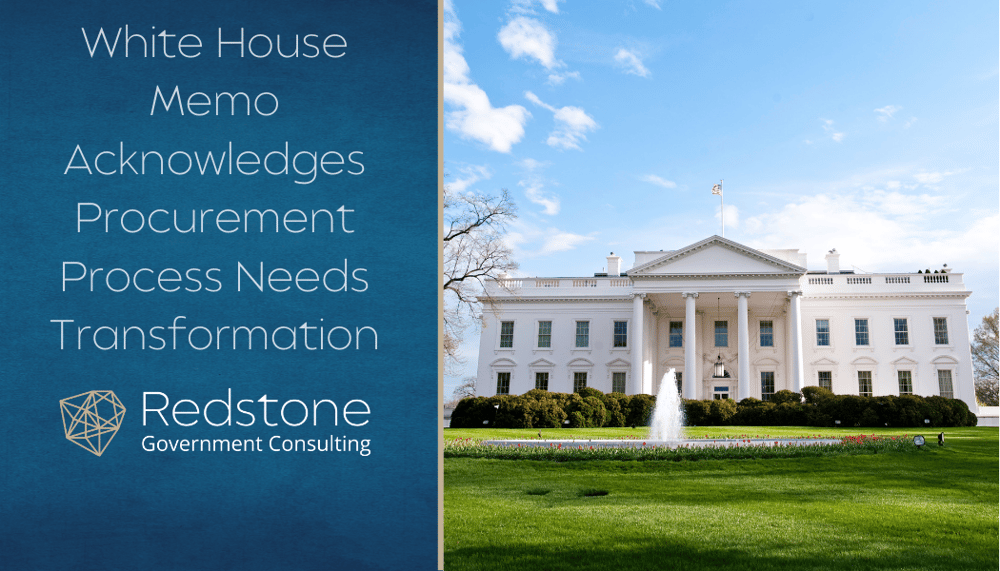
In a December 4 2014 memorandum to Chief Acquisition Officers, the Office of Management and Budget (OMB) surprisingly admits that the government procurement process requires a shake-up to improve efficiency and reduce administrative burden on both government contracting personnel as well as contractors.
The memorandum’s admission of bad government regulatory processes and non-value added methods of accomplishing procurements is in stark contrast to the Executive Department’s heavy handed approach in holding government contractors to multiple layers of useless bureaucratic and politically motivated reporting and monitoring requirements via a 2014 barrage of Executive Orders (EO). The obvious effect of the White House EOs is entirely contradictory to OMB’s December 4 memo which nominally seeks to reduce procurement obstacles for government contractors.
The author of the OMB memo, Anne E. Rung, notes that feedback from government contractors and “other stakeholders” is relatively consistent in terms of a consensus that government regulations unnecessarily complicate the procurement process, produce higher costs, diminish innovation, slows the procurement process, increases the costs of proposal preparation, places unintended burdens on small businesses, and stifles the desire of potential new entrants to do business with the government.
As an example of dealing with barriers to contractor innovation, Ms. Rung states that more attention must be directed to regulations related to procurements of commercial products and services and the problems they create for government contractors. Recent regulatory changes (and more initiatives to come) governing commercial items have only created a higher wall to hurdle for contractors to justify commerciality and/or the price reasonableness of supplies or services they sell as “commercial”. Although the contractor community has repeatedly warned our legislators and the White House that government initiatives were contradictory to achieving better procurement, the march into the volcano continues.
The OMB memorandum provides several ambiguous goals and a few instructions to agency executives, with the goal of transforming the procurement process and building stronger vendor relationships through “open dialogue” forums and measures to reduce procurement strangleholds. So, government contractors, do not despair—the government is here to help you. Predictably, more memorandums to come pontificating government procurement reform, but probably little action to implement.


 Darryl Walker is a Emeritus Advisor for Government Compliance with Redstone Government Consulting, Inc., and formerly served as an Owner and Technical Director for the Beason & Nalley Government contract consulting group for over ten years. He provides content for our Government Insights Newsletter, provides training courses to government contractor and business community leaders, and consults with government contractors regarding a vast range of issues including cost proposals and presentations, internal controls, proposal preparation, compliance with the FAR and Cost Accounting Standards, litigation support, specialized claims, defective pricing issues, liaison with procurement and DCAA audit officials, and accounting and management systems compliance. Prior to joining Redstone Government Consulting, Darryl worked with the Defense Contract Audit Agency (DCAA) for almost 34 years in a variety of technical and management capacities. During his tenure with DCAA, Darryl provided audit services to a wide range of government agencies, including the Department of Defense, NASA, Department of Energy, Department of Interior, General Services Administration, and Department of Justice. During his experience with DCAA, Darryl audited over 3,000 government contractors throughout the Southeastern United States, Europe, and the Middle East. Education Darryl is a graduate of Texas Wesleyan College with a major in accounting and minor in economics.
Darryl Walker is a Emeritus Advisor for Government Compliance with Redstone Government Consulting, Inc., and formerly served as an Owner and Technical Director for the Beason & Nalley Government contract consulting group for over ten years. He provides content for our Government Insights Newsletter, provides training courses to government contractor and business community leaders, and consults with government contractors regarding a vast range of issues including cost proposals and presentations, internal controls, proposal preparation, compliance with the FAR and Cost Accounting Standards, litigation support, specialized claims, defective pricing issues, liaison with procurement and DCAA audit officials, and accounting and management systems compliance. Prior to joining Redstone Government Consulting, Darryl worked with the Defense Contract Audit Agency (DCAA) for almost 34 years in a variety of technical and management capacities. During his tenure with DCAA, Darryl provided audit services to a wide range of government agencies, including the Department of Defense, NASA, Department of Energy, Department of Interior, General Services Administration, and Department of Justice. During his experience with DCAA, Darryl audited over 3,000 government contractors throughout the Southeastern United States, Europe, and the Middle East. Education Darryl is a graduate of Texas Wesleyan College with a major in accounting and minor in economics.